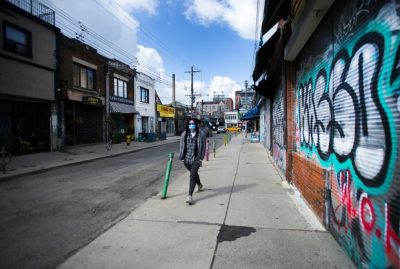
David Parkinson, Globe & Mail, May 6, 2020
Economy watchers during the COVID-19 lockdown might want to take a lesson from Wayne Gretzky. It’s not about where the puck is, but where it’s going.
The Great One is no economist (as far I know), but his hockey philosophy translates well in a time when it’s hard not to fixate on the shocking data spilling from the pandemic-induced shutdowns. More than 7.6 million unique applications for the Canadian Emergency Response Benefit. Unemployment rate headed for 20 per cent. Gross domestic product down by nearly 10 per cent in March alone.
On Friday, the focus will turn to Statistics Canada’s employment numbers for April. They will tell the tale of millions of Canadians whose livelihood and financial stability have been abruptly jolted by the pandemic. As my colleague Matt Lundy reported Wednesday, economists figure we could see employment plunge by five million from March’s level. The numbers are mind-boggling, upsetting, depressing.
But all they tell us is what a health-related shutdown of large swaths of the economy looks like. When you order businesses to close and workers to go home, you have by definition ordered huge numbers of people to not be working.
Frankly, we are in a situation so unusual, so surreal, that the standard economic data simply aren’t equipped for it. As indicators of economic trend, they are near-useless. They tell us, loudly and alarmingly, where the puck is; they tell us less about where it’s going than perhaps any time in the history of modern economic statistics.
What we need isn’t the evidence of jobs already lost, but indications of how many of them will come back. We need to know if the all-too-obvious damage before our eyes is entirely reversible, or in danger of becoming irreparable.
Independent research firm Modus Research has some new data that won’t garner anywhere near the attention of the Statscan job report, but may be more indicative of that. On Thursday, it plans to release the results of a survey of Canadian companies about probably the most fundamental economic question arising from this crisis: Will your business survive this shutdown?
Modus provided The Globe and Mail with an advance glimpse at the findings, which polled a representative sample of nearly 1,000 managers and executives between April 20 and April 30. The survey showed that 21 per cent of the companies polled said they won’t survive three months under the current restrictions; they don’t have sufficient revenues, cash reserves and/or available credit to remain viable, even with government assistance programs. Five per cent said they had already shut down.
And if the COVID restrictions were pushed out to six months? Nearly half (46 per cent) say they wouldn’t make it.
The good news is that most of the country is talking about easing the restrictions this month, allowing at least some businesses to return to operations – if not at full speed, at least with some meaningful recovery of revenues. But we will be roughly two months into the lockdowns before any significant reopening can take place – and certainly more than that for some sectors, such as full-service restaurants. The survey results suggest that we may have already lost a significant number of businesses for good – and we may lose many more before they can be restarted. Even once the doors can be reopened, it’s clear that we have pushed a lot of companies near the edge.
One of the biggest factors distinguishing a standard cyclical economic slowdown from a more serious, long-lasting recession is what’s known as capacity destruction. When a deep and/or prolonged downturn doesn’t just slow businesses but forces them to permanently shut down, the economy’s capacity to produce goods and services shrinks. Jobs are permanently lost, and the avenues to revive or replace them are reduced. This is the bigger threat from the shutdown than the immediate, headline-grabbing impact of the current deliberate halting of economic activity.
The Modus survey comes on the heels of a Statscan “crowdsourced” poll of 12,600 businesses released last week, which showed that one-third of companies had suffered a revenue drop of more than 40 per cent in the first quarter compared with a year earlier, and nearly as many had drawn from their lines of credit to cover shortfalls. Statscan launched the survey, in conjunction with the Canadian Chamber of Commerce, in order to deliver a more rapid response to what has become an urgent need: to understand how well businesses can withstand the pressures of the COVID crisis, and for how long.
These sorts of business sentiment indicators are not only informative for economic forecasters, but should provide critical guides to government policy. The findings suggest that the private sector may require additional and perhaps continuing help from the government, especially in harder-hit sectors, to survive what has been demanded of them in this health crisis – and to refill that shocking hole that is coming in the April job numbers.


